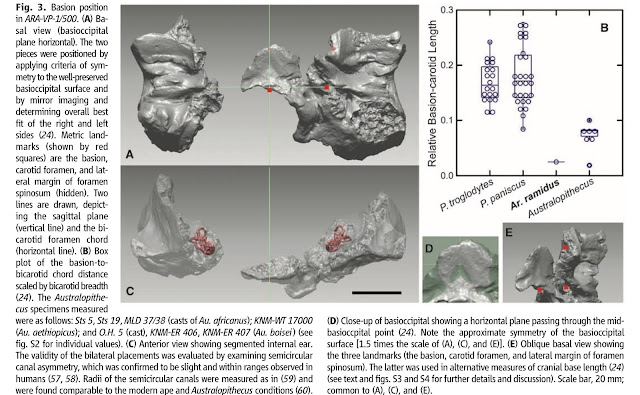When we look back to our species’ origins we can see millions of years of history, but those origins have only been studied for a few hundred years. Every culture and continent had a different explanation for human creation. Up until the 19th century it was generally accepted by western scholars that the Christian creation story was the dawn of the human species. However, as science began to improve and the enlightenment brought new thoughts and ideas forward. Unfortunately like all human ideas these new theories were colored by bias. Racism and sexism ran rampant in theories of evolution and still affect society and academics today. It would be unethical to start any discussion about human origins or biological anthropology in general without addressing these biases.
Racism
The time period in which the discussion of human origins began was at the height of the colonialist era and thus racism was also at the forefront of scientific discovery as much as it was everything else. In the earliest discussions of human origins different ethnicities were considered lesser than others. For instance, white over Asian, and Asian over Black. Thus it was easier for Europeans to consider Asia the birthplace of humanity. Even after this was disproved by fossil evidence racism still prevailed in theories as Africans were seen as a missing link and behind white people in evolutionary standards. This was ‘proven’ by studying morphologies of indigenous people and the ‘primitive’ lifestyles they lead (Athreya et al). This thinking lead to atrocities such as human zoos where white Americans and Europeans would come to observe native people in enclosures. There was also the problem of eugenics tainting anthropological thought. The belief that the ideal person was white was popular up until World War 2. The Holocaust caused the movement to loose support and subsequently physical anthropolgy changed. An entire reboot of physical anthropology took place in the later half of the 20th century. This was where Washburns new physical anthropology was born and the discipline shifted from the study of race to the study of human origins (Athreya et al). Even with these changes there are still colonialist themes in the discipline, such as the replacement model of humans leaving Africa that have resounding colonialist influences.
Sexism
There is also resounding sexism within the discipline of biological anthropology particularly against women of color. This has been common since the colonialist era as African and native women were oversexualized and seen as improper compared to the Victorian, white, Christian women of the time. One such woman who was exploited in order to support this prejudice was Saartjie or Sarah Baartman who was one of two Kohikhoi women displayed as a “living savage” or “Hottentot Venus” because of their curvy figures. What was done to Baartman was not a unique experience and happened to many indigenous people. The disrespect did not only take place in life either, after her death in 1815 her remains were put on display in a museum. Baartman’s remains were not repatriated until 2002.
To learn more about Sarah Baartman’s life and death please refer to this video:
This oversexualization of women of color in the study of human evolution carries into today's work in the anthropological field. Paleolithic fertility statues are still called venuses which denotes race, and ignores diversity of early people. Even current mainstream feminism and the feminist theories that are used in the discipline often only exemplify the experiences of white women.
For many years anthropology has been used as a tool of the oppressor. The longstanding narrative valuing the history, lives, and voices of white men above the rest. In order to carry our discipline forward we must include the voices of minorities and women in the conversation surrounding biological anthropology. There are several things you and I can do to help. Firstly we have to admit that if we are white or male or both we have certain privilege, and by acknowledging that privilege we can begin to change ourselves for the better. Secondly we have to reevaluate the theories and models that we use in order to find the undertones of otherness that still live in them. Thirdly we can make room for the voices of minorities by not speaking over them. When conversations about oppression arise we must lift the voices of the oppressed, not make our own interjections. Finally as a community we must agree that we will not tolerate racism, sexism, ableism, homophobia, or any other form of oppression and hatred in the spaces we occupy.
Athreya, S., & Ackermann, R. (2018). Colonialism and narratives of human origins in Asia and Africa. doi: 10.31730/osf.io/jtkn2











